Jackson’s Carnegie Library, a grandiose little Beaux Arts box, always seemed a bit too grandiose for a city of its size. It turns out there’s a unique reason for that: Zelie Passavant Emerson, the woman who led fundraising efforts to build the library, had known Andrew Carnegie back in Pittsburgh...where he had once asked for her hand in marriage.
The steel baron’s old flame secured Jackson an extra $20,000 on top of their initial $50,000 grant, 25% more than the city merited under Carnegie’s normal population-based formula. You have to admire the chutzpah, tugging on the heartstrings of your bloody union-buster billionaire ex to build your town a library.


So what's changed? Shockingly little. A relatively unobtrusive addition was added to the back, along with some new landscaping, a flag pole, a statue, and a little seating area in front, but otherwise the neoclassical exterior looks about the same as when it opened in 1906. Perhaps more unexpectedly–given the changes in technology and library programming over the last century–the interior is also basically untouched. Terrazzo floors, marble stairs, a full entablature, etc. The light fixtures are slightly humbler these days, but otherwise this is a fascinating Carnegie library: both a lively public space and a bit of a time capsule.


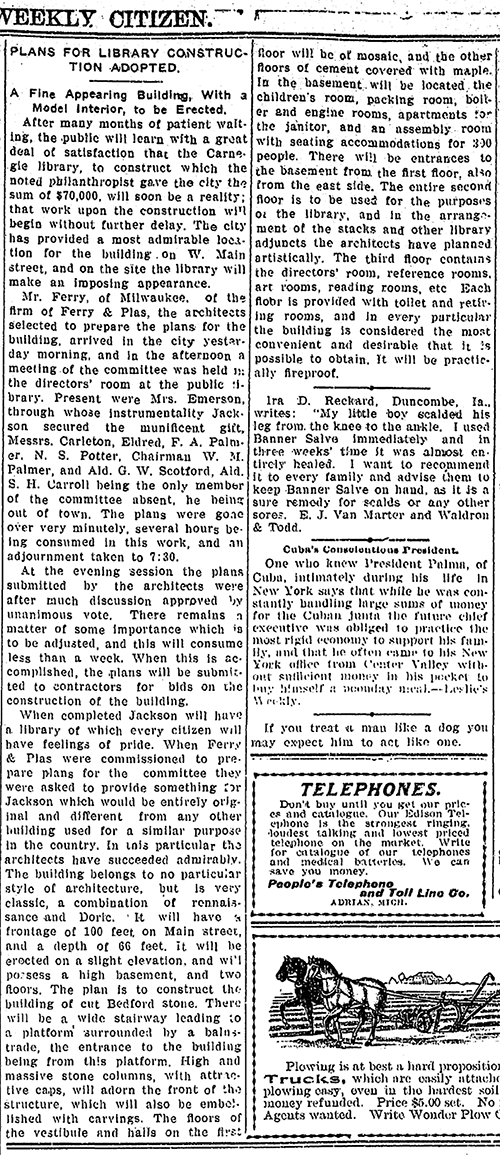
Articles about Carnegie's grant, the referendum required to raise a bond to buy the site for the new library that that grant would build, and the selection and approval of Ferry & Clas' plan for the new library.
To build their new library building, Jackson held a design competition. Ferry & Clas beat four other entries to win the commission. The firm was Milwaukee’s preeminent practitioner of Beaux Arts architecture, and Ferry & Clas designed that city’s monumental Central Library a decade before Jackson’s. For a town whose residents usually looked to Detroit or Chicago firms for their prestige projects, this was an unusual get.
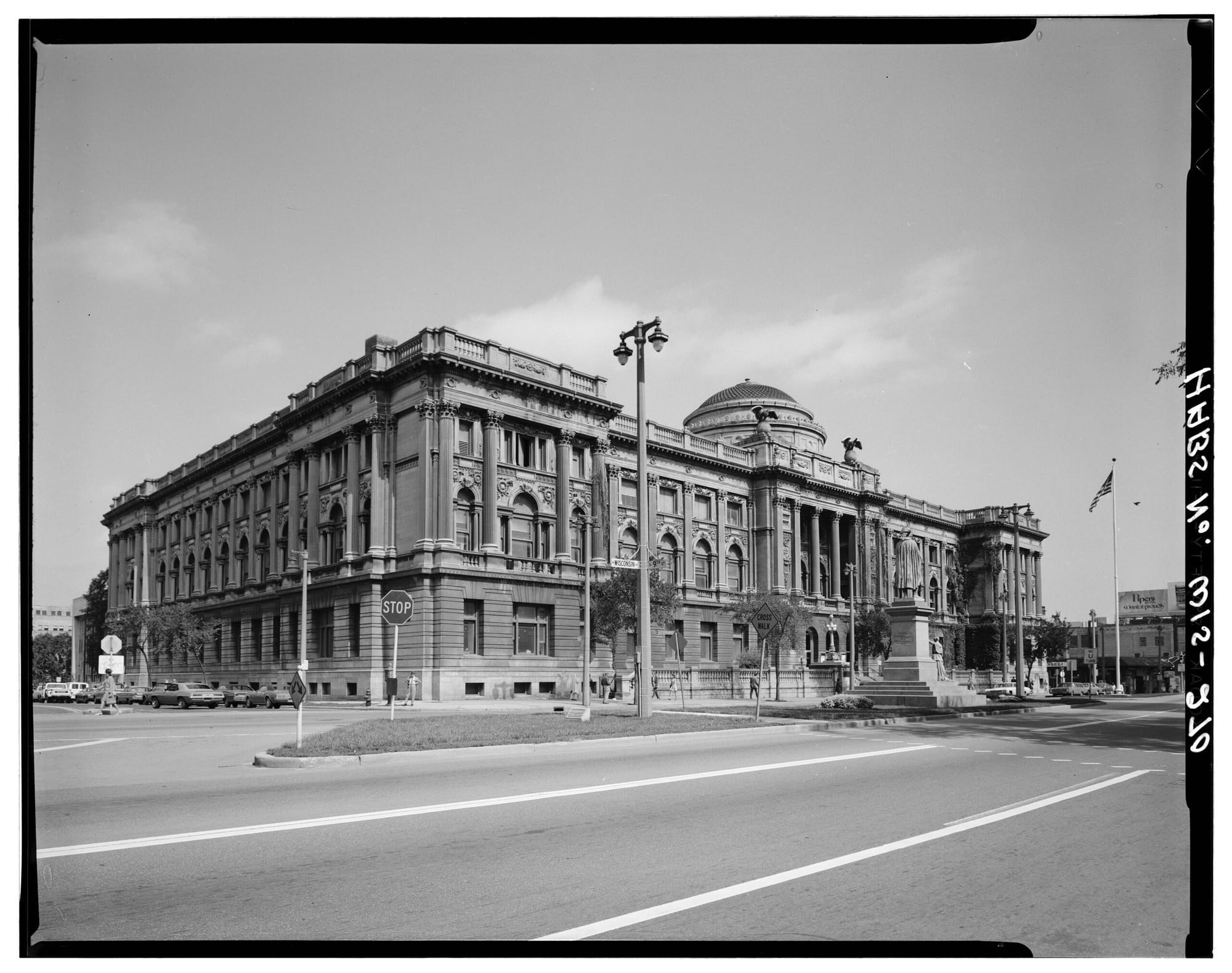
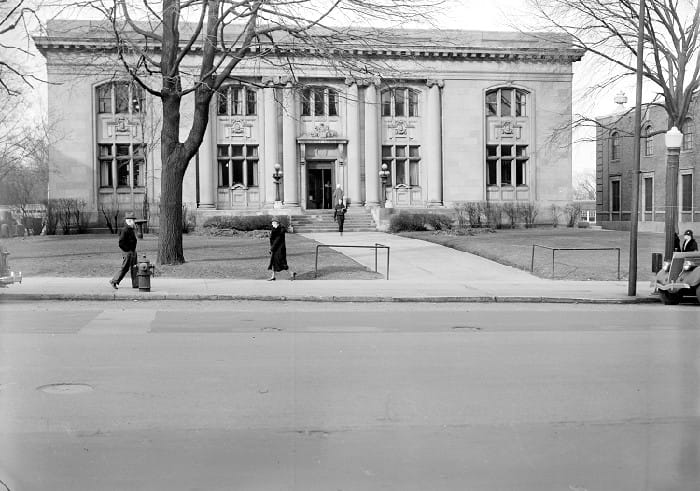
Milwaukee Central Library, designed by Ferry & Clas, HABS, Library of Congress | Jackson Carnegie Library, 1938, Walter P. Reuther Library, Archives of Labor and Urban Affairs, Wayne State University
…but the library project still ran out of money–blaming labor unrest and construction problems–and they petitioned Carnegie for a supplemental grant. By that point Carnegie’s personal secretary, James Bertram, had taken greater control of the library program. Bertram didn’t have the same soft spot for Mrs. Passavant Emerson and he denied them, pointing out that the $70k they received was significantly more than standard and more than enough to build a library in Jackson. Really piling on, he wrote that, “it is discreditable to thos (sic) managing the affairs that with the money provided, there should at this date be $10,000 more expenditure required to finish”.
The library committee made do, obviously, and the building opened in 1906.

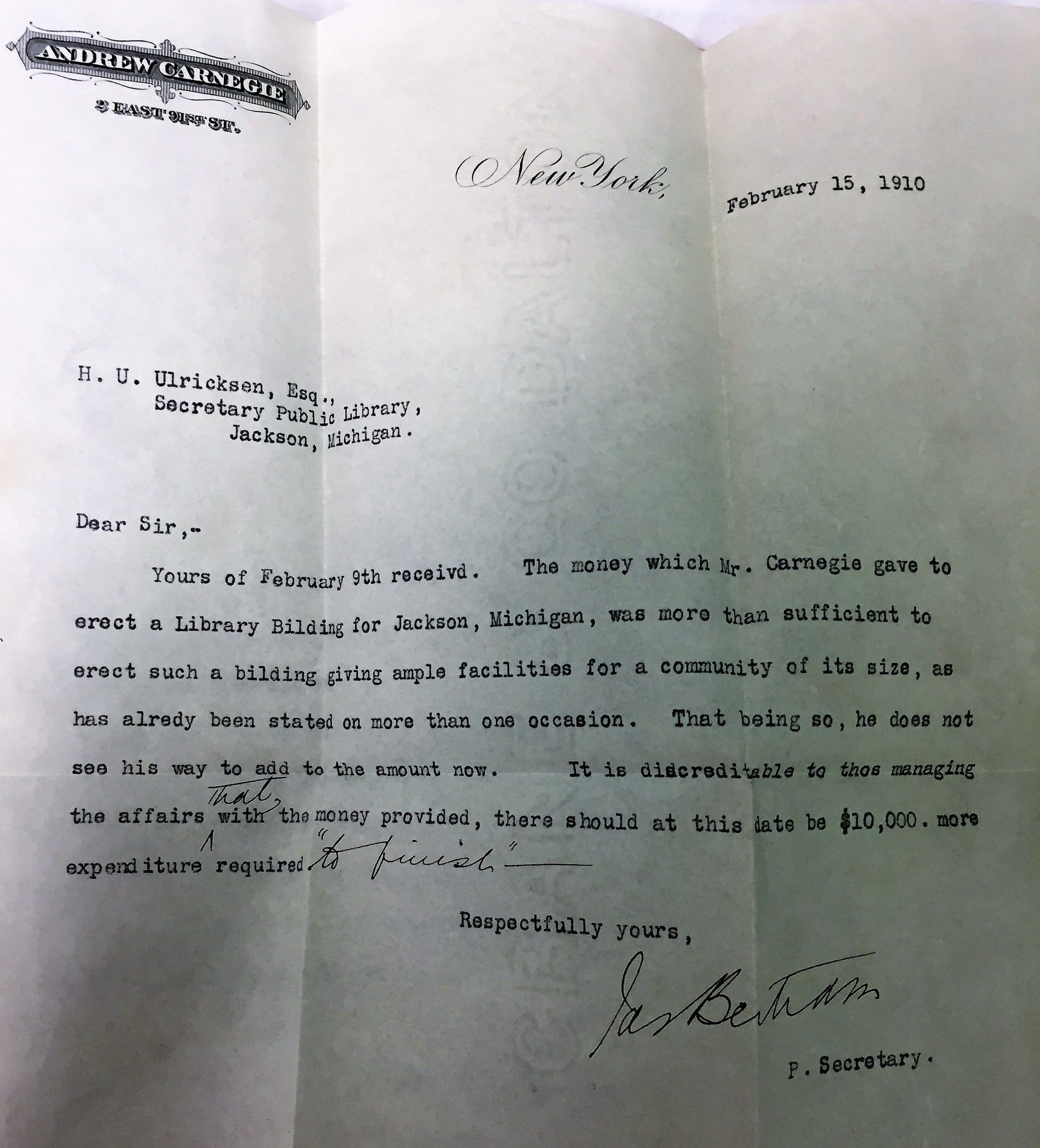
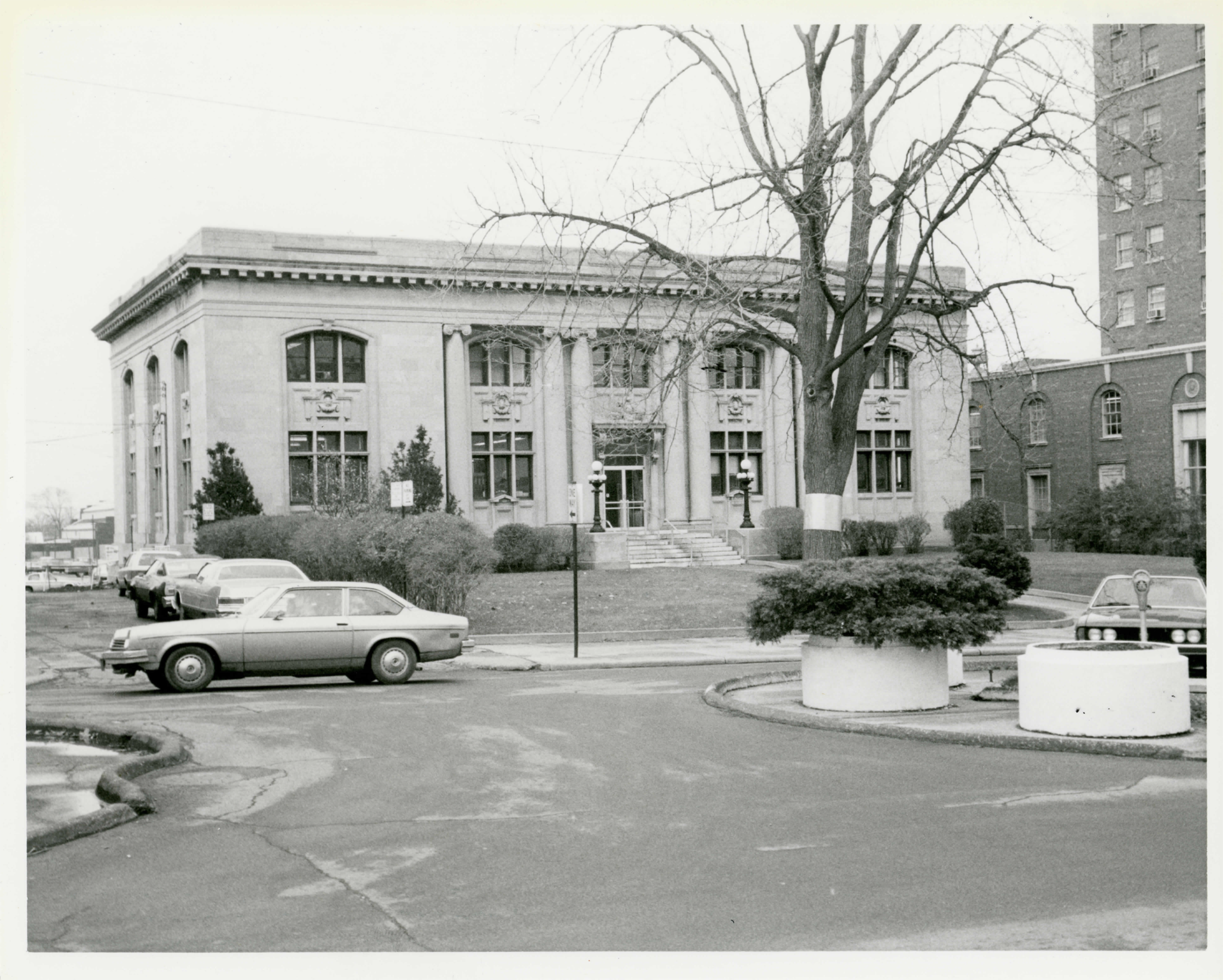
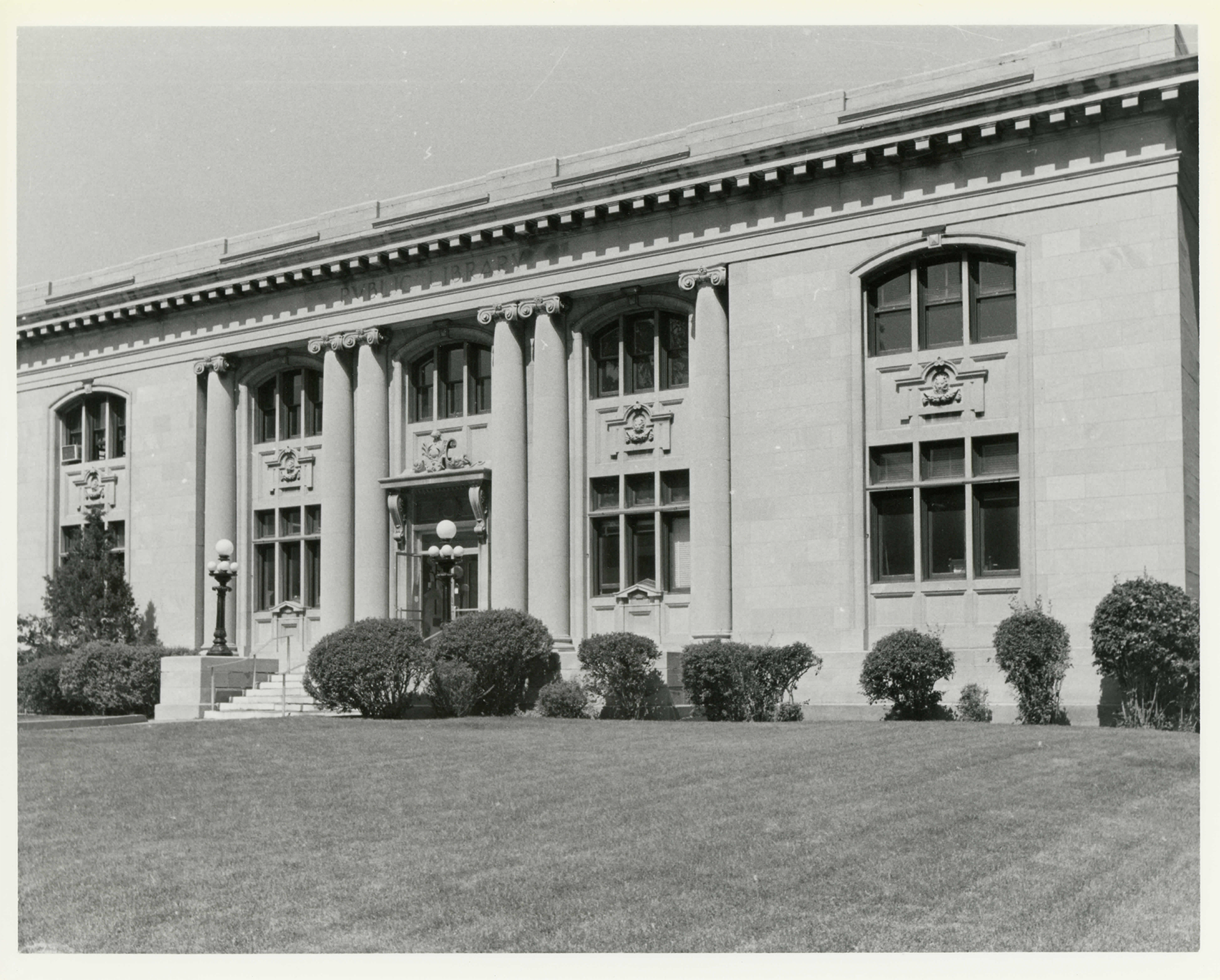
1908, A.S. Lyndon, Library of Congress | 1910 letter from Carnegie secretary James Bertram declining Jackson's request for another $10k to finish the library (and it wasn't the first one, apparently) | 1979 photos by John G. Albers, NRHP Nomination Form
The city’s public library system merged with the county’s public library system in the late 1970s, creating the Jackson District Library. Added to the National Register of Historic Places in 1980, Jackson Carnegie Library was expanded with a relatively low-key addition in 1981 that added an elevator and more programming space. It’s still the flagship library of the 13-library system today. (as an aside, JDL is wonderful–support your libraries, folks).
A note on Carnegie libraries: a remarkable infrastructure and literacy program, Carnegie required municipalities to apply for a grant themselves and show a plan to fund the library’s maintenance and operations in perpetuity. The key thing was that it was local government–and local government alone–that had to initiate this process and run these libraries, not foundations or any other private organization. Today, that seems an almost radical philanthropic structure. A similar program in the 2020s would likely contort itself in all sorts of ways to circumvent local government, creating an opaque public-private partnership or nonprofit to mask power, evade public scrutiny, and avoid our oft-broken public appropriation process (...some of which is at least a little understandable at the moment–think of the book-banning right-wing weirdos trying to take over library boards across the US).
In addition to tapping Andrew Carnegie to build Jackson a new library, Zelie Passavant Emerson also raised an impressive daughter. Also named Zelie Passavant Emerson, Zelie the younger was an activist, involved in Women’s Trade Union League strikes and the settlement house movement in Chicago. After she befriended Sylvia Pankhurst, Zelie moved to London and became active in the women’s suffrage movement in the UK.
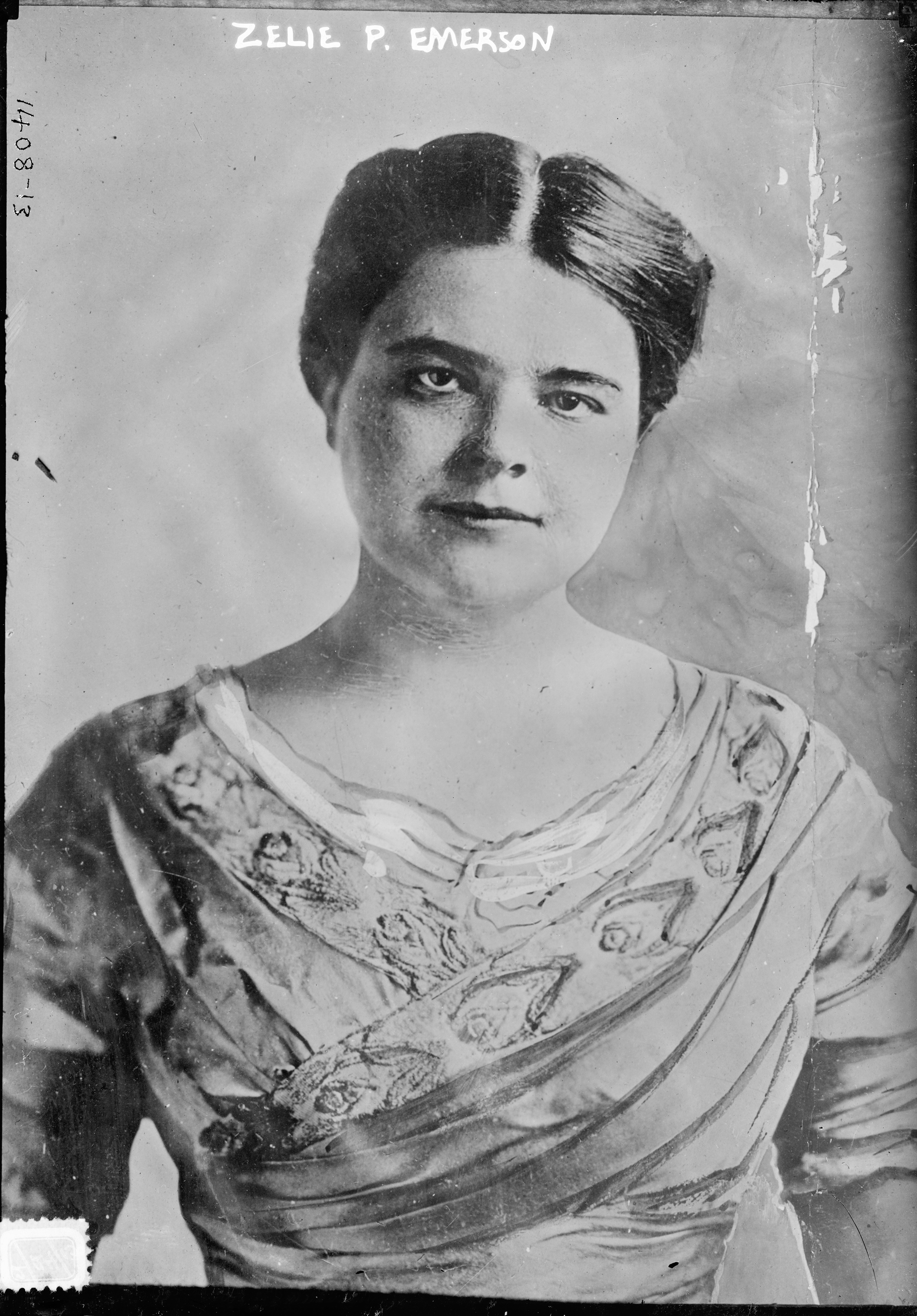
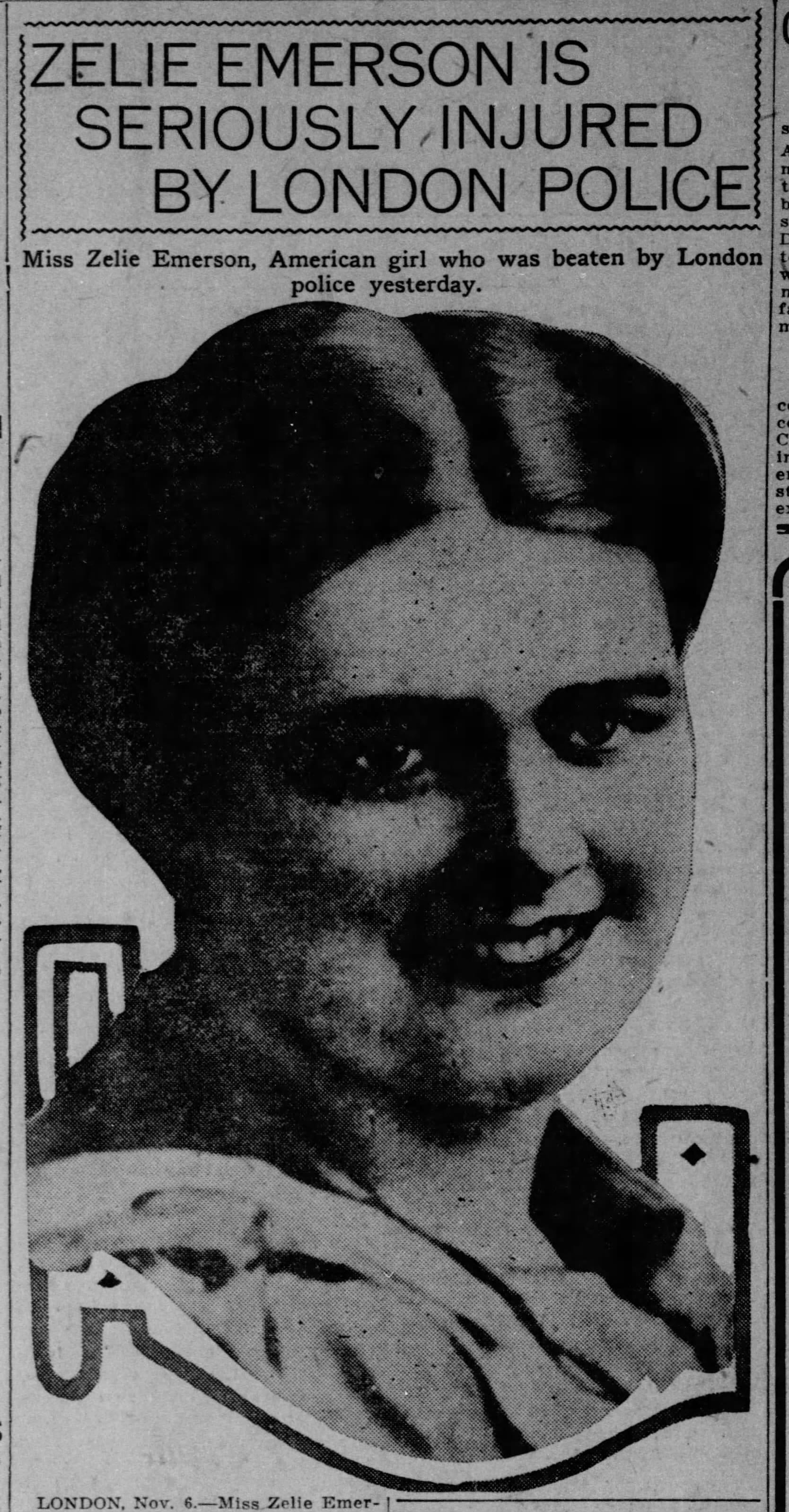

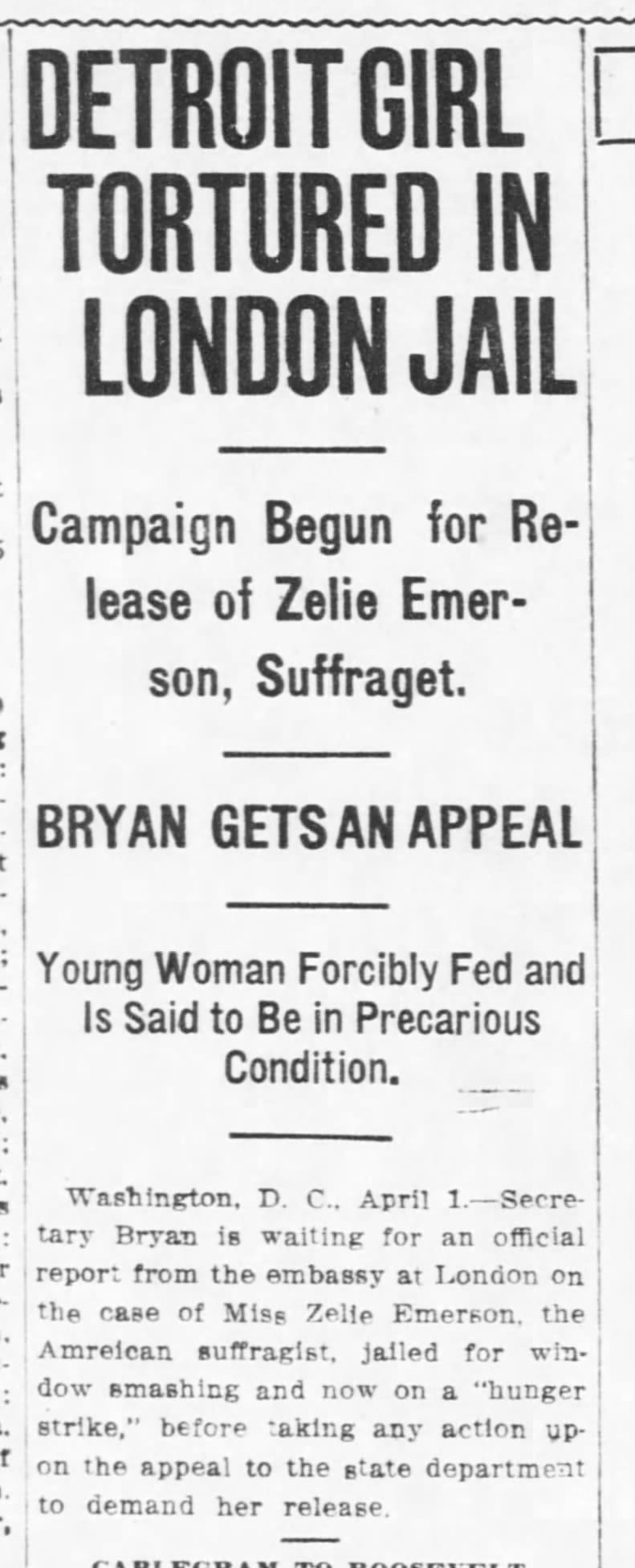
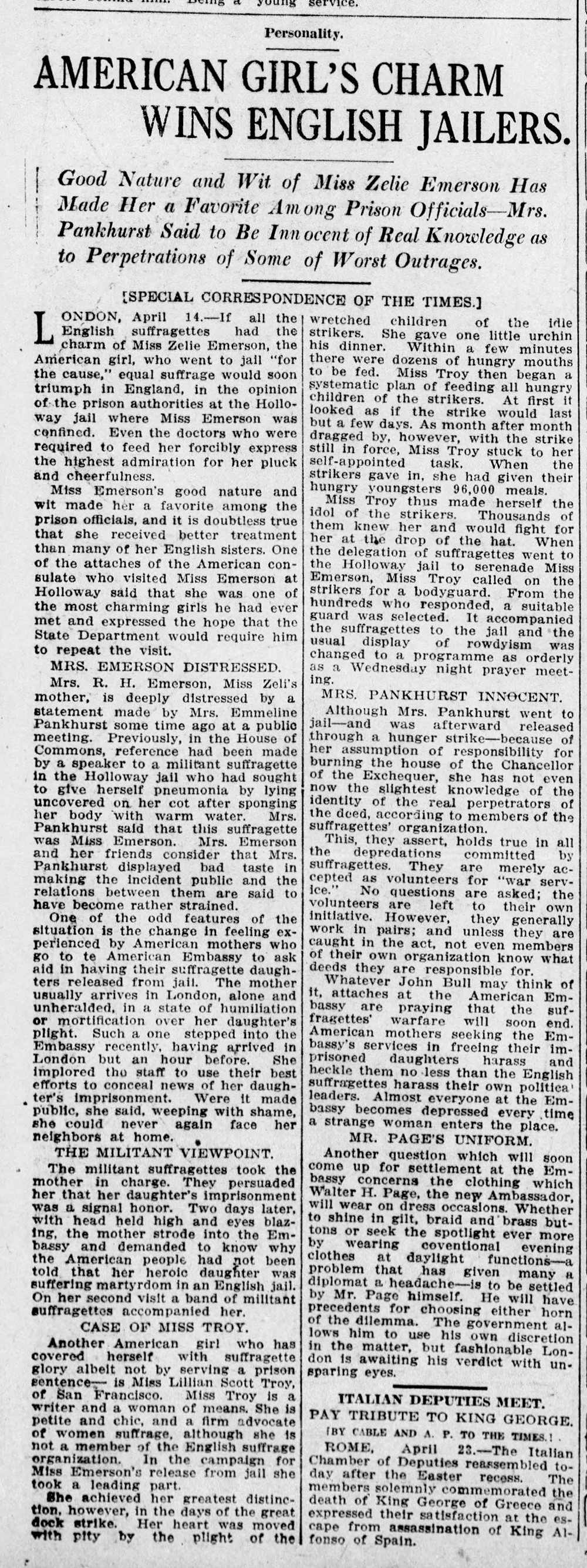
Zelie P. Emerson, Library of Congress | Articles about British police breaking Zelie Emerson's skull and her time in jail in 1913
Part of the socialist East London Federation of Suffragettes, British police fractured Emerson’s skull on two different occasions, and she spent weeks in jail. Scholars today suggest that Emerson and Pankhurst were romantically involved–when Zelie moved back to the US, Pankhurst gave her a lock of her hair, and Emerson wrote her a sorrowful poem about the end of their relationship.
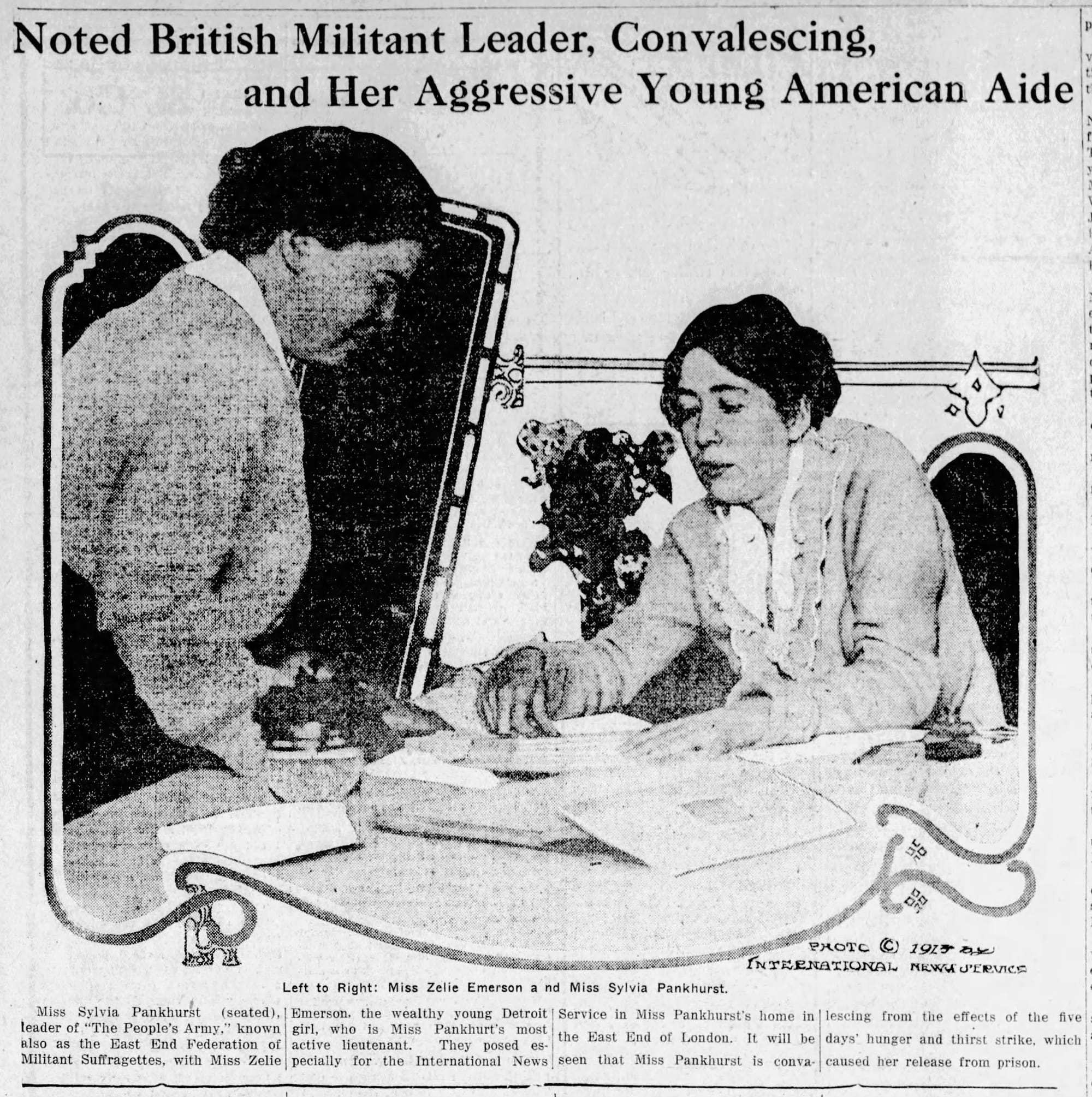
Since they share the same name, I initially thought it was all the same Zelie Emerson: courted by Carnegie, secured the bag for Jackson’s library committee, worked as a labor activist in Chicago, AND fought for women’s voting rights in the UK. That would’ve been a real Forrest Gump-ass story. Still, quite a mother-daughter duo.

Production Files
Further reading:
- The NRHP nomination form
- In the Jackson District Library's own words
- In the Society of Architectural Historians' Archipedia
- In the Jackson Citizen Patriot 'Peek Through Time' series
- On Zelie Emerson and Sylvia Pankhurst:
- Public Faces, Secret Lives: a Queer History of the Women's Suffrage Movement by Wendy L. Rouse
- Sylvia Pankhurst: Sexual Politics And Political Activism by Barbara Winslow
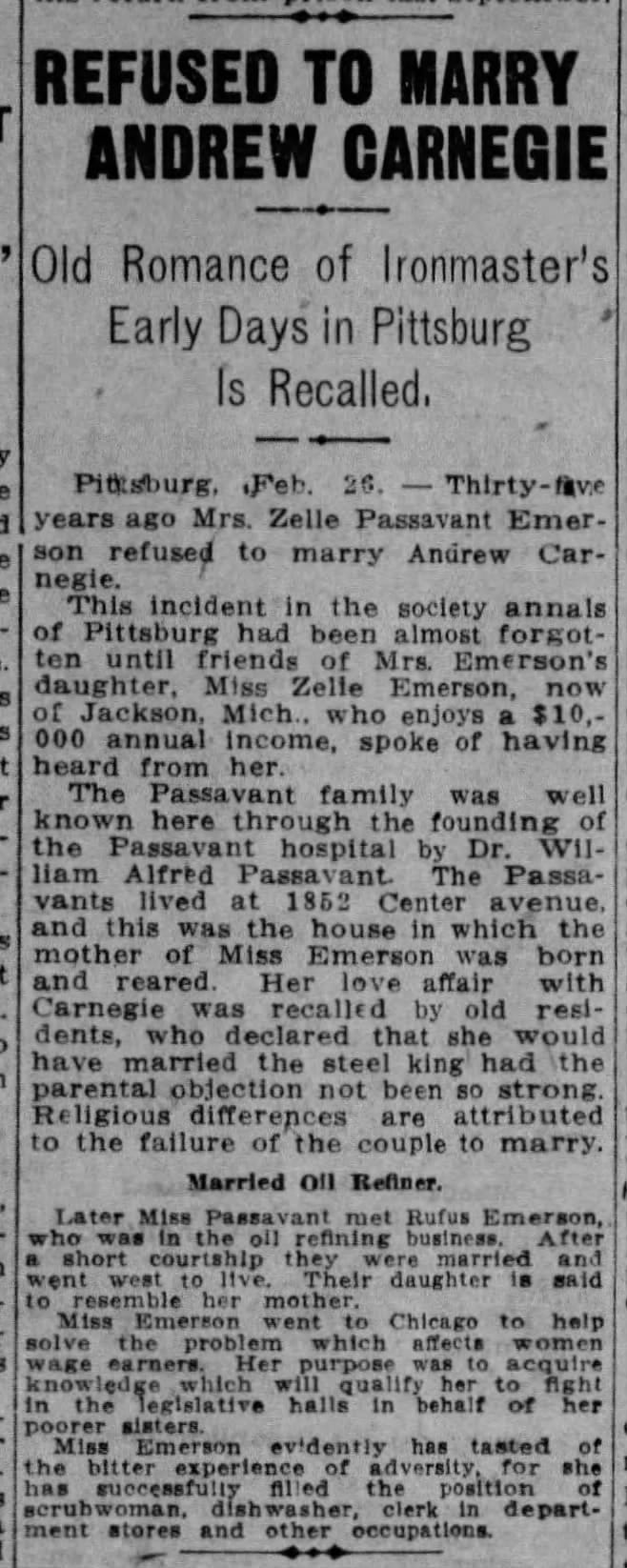
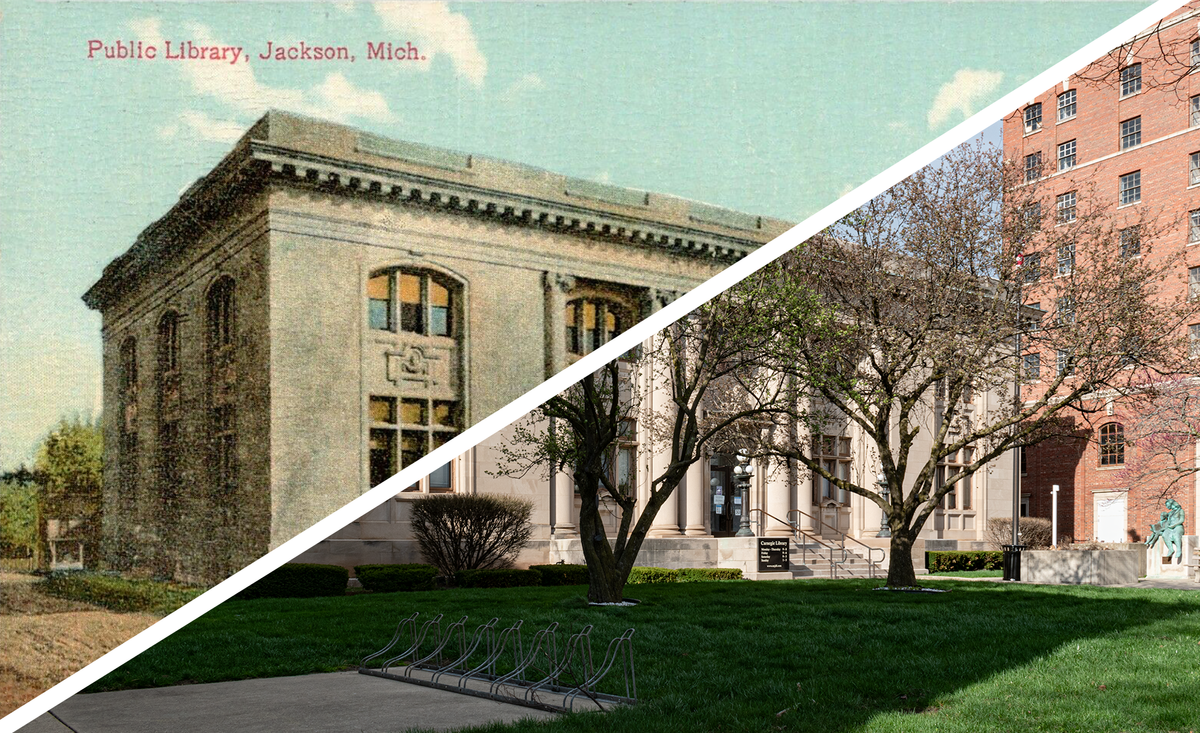
Member discussion: